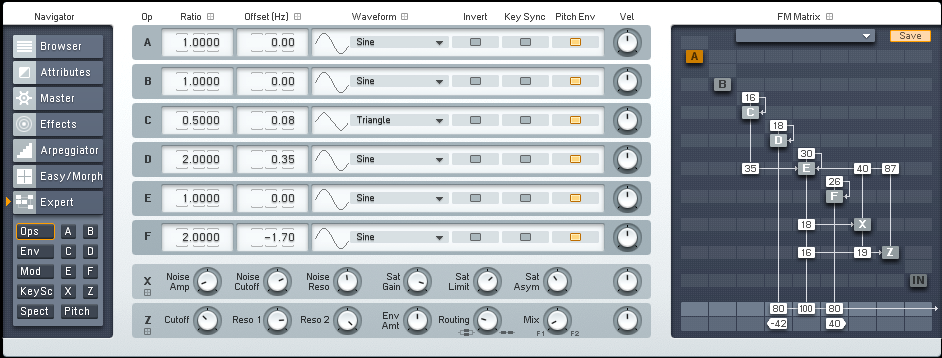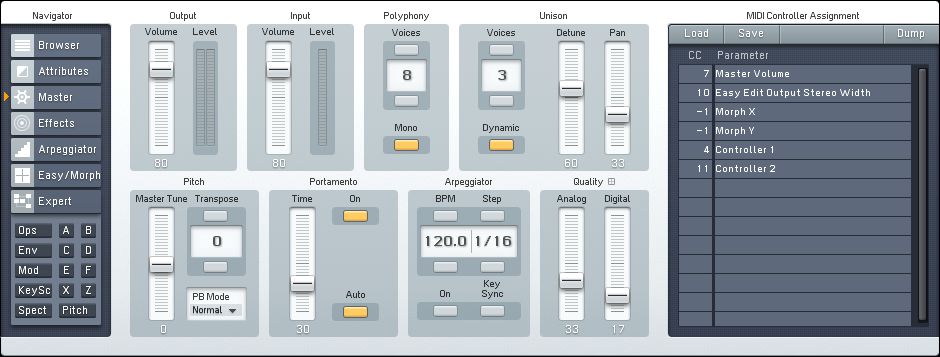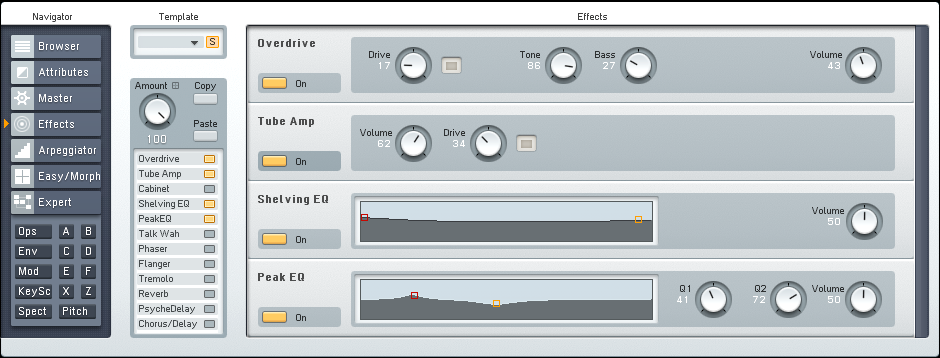
FM8 Tutorials
Designing a Low End FM8 Distortion Bass
Many popular artists have had success in recent years with layering low end synths with their heavy distortion style basslines. The result is an incredibly large sound that you can feel as well as hear. It adds such a strong presence to the music that it becomes infectious and you simply cannot resist the urge to get into it. This lesson focuses on how to make an FM8 distortion bass that can stand up to this kind of music production. Keep in mind as you progress through this tutorial, especially if you choose to make changes along the way, that you cannot allow this synth to become too wide or have too much phasing or it can present problems for you later on. You always want to be aware and proactive when it comes to safeguarding yourself against phase cancellation and mixing conflicts.
Starting off with the FM Matrix, you can see that I have three operators routed to the main output strip. One is kept in the middle, while two are panned slightly in opposite directs to create a wider sound. Be careful not to offset panning too much initially, and to look at this FM8 distortion bass, when you are done, with a stereo imaging analysis tool to ensure the best results. Both the noise/saturator oscillator (Operator X) and the filter (Operator Z) are used, but are not routed to the output. Instead they are used to process sounds form the middle oscillator (Operator E) and feed the sounds back into the same oscillator for a more complex sound. And while all of the main oscillators are feeding back into themselves to create an edge, Operator C is the only modulator and is only affecting Operator E.
The total number of Unisono voices is increased to three, and the synth is detuned and panned to increase the perceived width and depth of the sound. It is set to run in a Mono polyphonic mode, meaning that only one note at a time can be played, and Portamento is turned on to allow for gliding between overlapping notes. There has also been some Analog and Digital Quality parameter adjustments to add a little more character and presence to this FM8 distortion bass.
A total of four effects have been added. First, a Shelving EQ and a Peak EQ are used to accent mostly the low end frequencies while attenuating the muddiness generated in the middle frequencies. An Overdrive effect is used to give an edgy distortion to the bass, and the Tube Amp enhances it. These last two effects bring some extra life to this FM8 distortion bass!
Below is a small sample of our FM8 distortion bass in action alongside some drums to give you a better idea of how it can sound in a mix.
[audio:https://www.fm8tutorials.com/wp-content/uploads/2012/10/Low-End-Distortion-Bass.mp3|titles=Low End Distortion Bass]Don’t forget to shoot us a message before you leave if you have a tutorial request! Thanks for stopping by!
Cheers,
OhmLab



 YOUTUBE
YOUTUBE